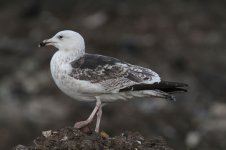Neil Morris
Well-known member

I'd be interested to learn of anyone's experience with this lens.
I've recently purchased one for use with a Canon EOS 7D. After just a few outings, the lens has performed well under sunny conditions. However, under overcast conditions the dreaded 'lack of contrast' (as discussed in various reviews) seems to become apparent. It is particularly noticeable in the attached untouched shots of a couple of Great Black-backed Gulls.
I wonder what you have found to be the best remedy for this weakness of an otherwise excellent wildlife lens? Is it in-camera adjustments or photoshop adjustments after the event? Thanks,
I've recently purchased one for use with a Canon EOS 7D. After just a few outings, the lens has performed well under sunny conditions. However, under overcast conditions the dreaded 'lack of contrast' (as discussed in various reviews) seems to become apparent. It is particularly noticeable in the attached untouched shots of a couple of Great Black-backed Gulls.
I wonder what you have found to be the best remedy for this weakness of an otherwise excellent wildlife lens? Is it in-camera adjustments or photoshop adjustments after the event? Thanks,









